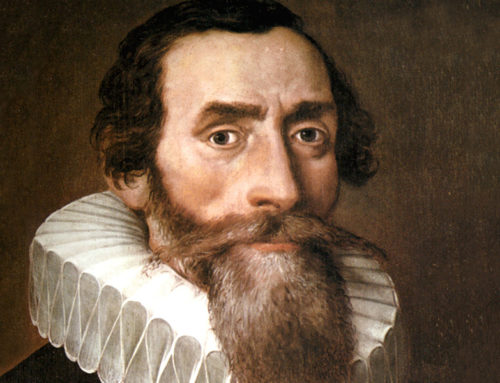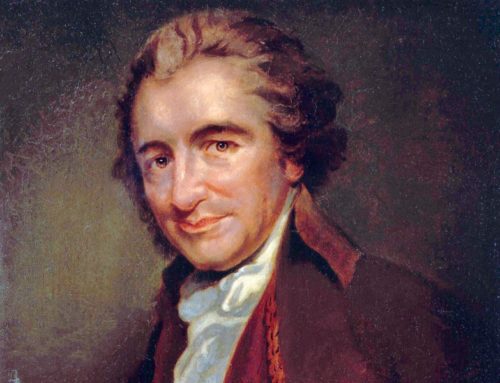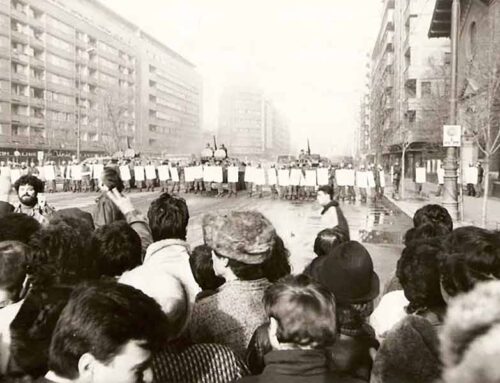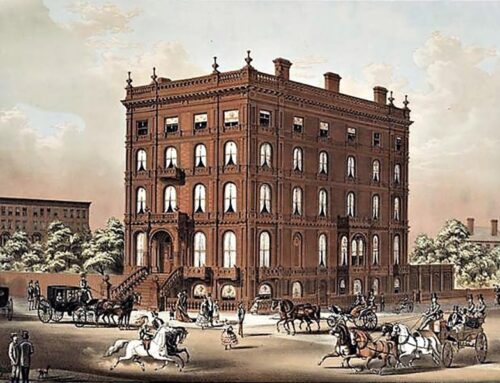

“And for your lifeblood I will surely demand an accounting. I will demand an accounting from every animal. And from each human being, too, I will demand an accounting for the life of another human being. Whoever sheds human blood, by humans shall their blood be shed; for in the image of God has God made mankind.” —Genesis 9:5-6
Japan Surrenders, September 2, 1945
![]() he iconic photograph shows the American commander in the Pacific Theatre of World War II, General Douglas MacArthur, standing behind the table that supports the surrender document. It will soon be signed by the representatives of the Empire of Japan as well as by himself, Fleet Admiral Chester Nimitz and representatives of the Allied Powers. The Japanese officials stand facing the table. They are aboard the Battleship USS Missouri, selected by President Truman in honor of his home state; the Japanese have been compelled to surrender, ending the Second World War.
he iconic photograph shows the American commander in the Pacific Theatre of World War II, General Douglas MacArthur, standing behind the table that supports the surrender document. It will soon be signed by the representatives of the Empire of Japan as well as by himself, Fleet Admiral Chester Nimitz and representatives of the Allied Powers. The Japanese officials stand facing the table. They are aboard the Battleship USS Missouri, selected by President Truman in honor of his home state; the Japanese have been compelled to surrender, ending the Second World War.
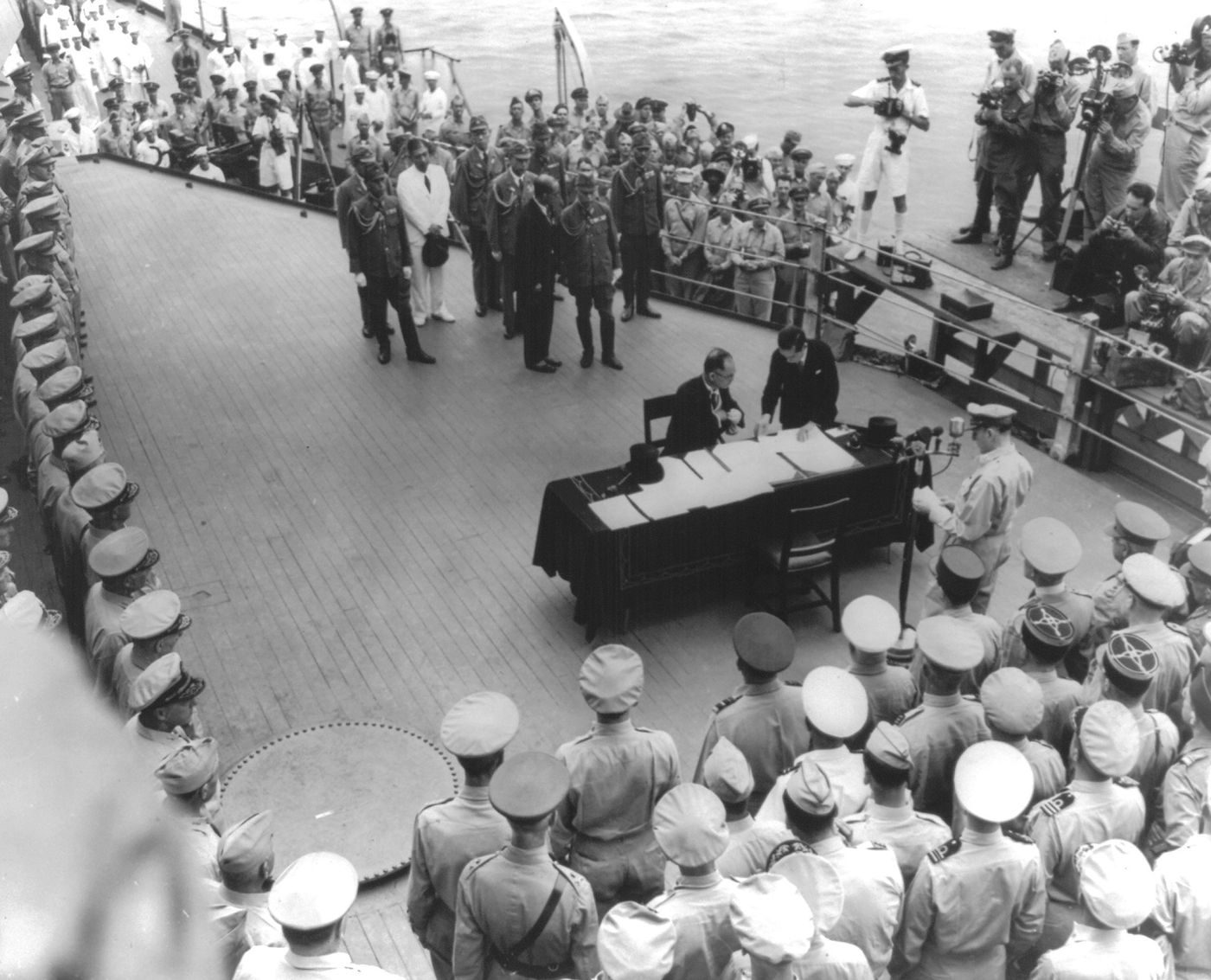
Japanese Foreign Minister Mamoru Shigemitsu, seated, signs the Japanese surrender document on the USS Missouri in Tokyo Bay on Sept. 2, 1945
The bloody eighty-two day battle of Okinawa, which ended in June, had resulted in about 75,000 Allied casualties, mostly American, and somewhere between 80-120,000 Japanese, mostly killed. About half of the 300,000 civilian native population of the island died as well. The Japanese hard-line militarists remained unconvinced about surrendering and it looked as if only a major invasion of the Japanese mainland could secure ultimate victory, but at an enormous cost. Massive incendiary air raids on the major Japanese cities in June and July had incinerated more than two million buildings leaving thirteen million people homeless and killing hundreds of thousands of civilians, mostly women and children. In late June, Japanese diplomats and the emperor himself began seeking ways to negotiate a peace that would leave the emperor in place, approaching the Soviet Union to serve as mediator in one instance, and Sweden in another.
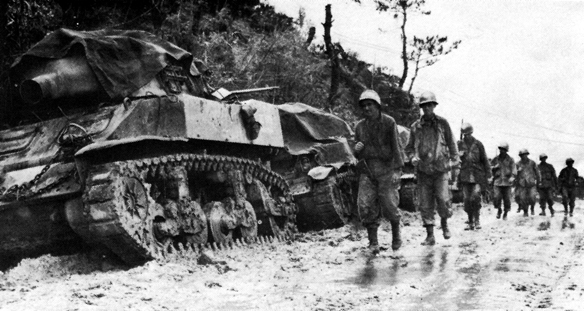
77th Division Infantry on Okinawa
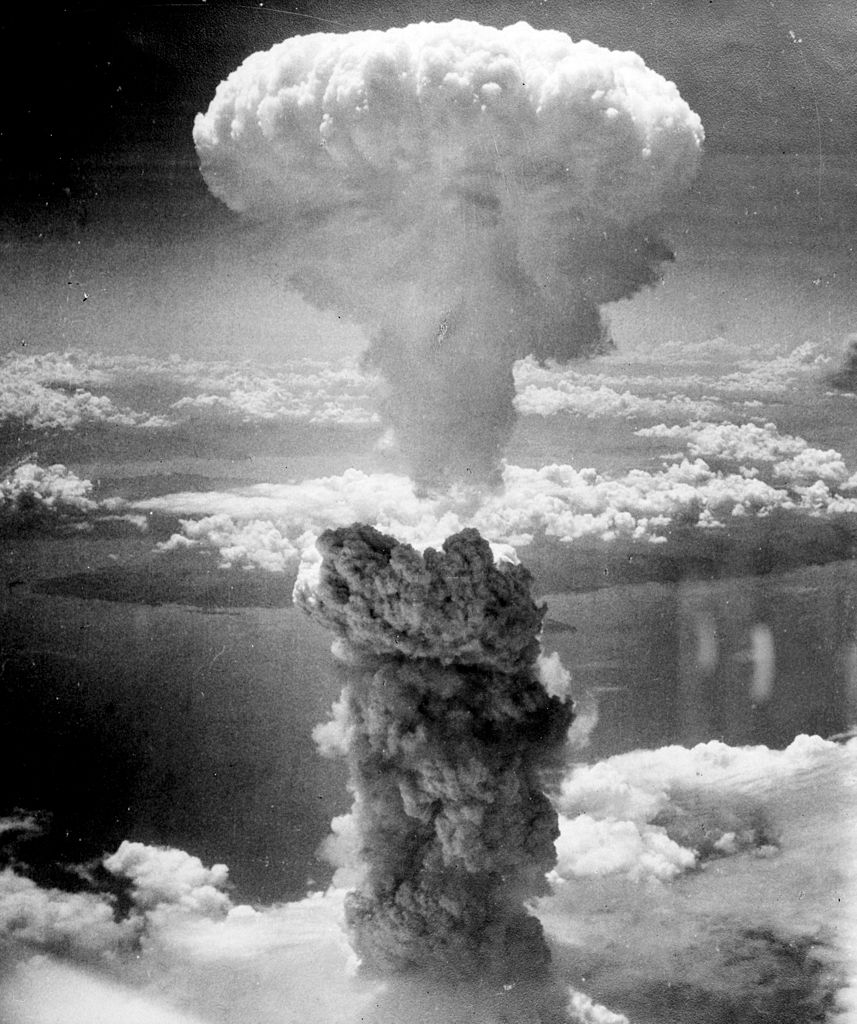
Atomic Bombing of Nagasaki on August 9, 1945
Russia diplomatically rebuffed Japanese overtures, planning to join the war against Japan for, no doubt, the acquisition of Japanese islands and demands of reparations. As plans went forward for the invasion, President Harry Truman made the decision to deploy the super top-secret atomic bomb. The United States sent a formal warning to Japan that a new devastating weapon would be used on them if they did not surrender unconditionally. The militarists ignored talk of giving up, even as the emperor and the peace elements of the government continued seeking negotiations through back channels. As providence would have it, two bombs were dropped on Japan, on the cities of Hiroshima and Nagasaki, killing about 200,000 people, mostly civilians. Although more people had been killed in the fire-bombings, the nature of the explosions and the fallout, in the days and weeks after, caused more agonizing deaths. The bombs brought the downfall of the militarists and an agreement to surrender to the Americans.
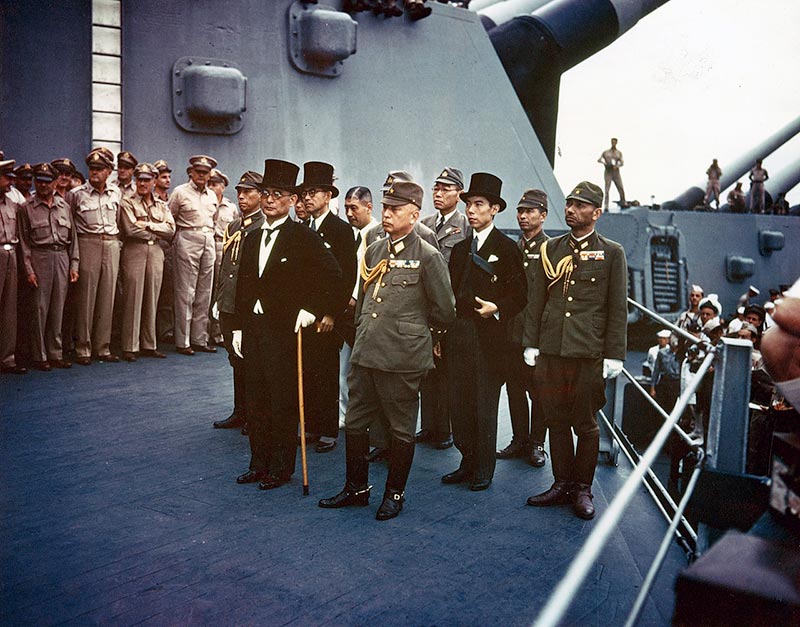
Representatives of the Empire of Japan on board USS Missouri, Tokyo Bay, September 2, 1945
The navigator on the USS Missouri, 24-year-old Lt. Cmdr. James Starnes, through a number of interesting providential circumstances, became the youngest man in that position on any battleship in the U.S. fleet. It fell to him to serve as officer of the deck for the surrender ceremonies. A kindly and gracious man in his later years, he never forgot that moment he had to step up and fulfill a role that history would remember as long as the war is remembered. He died in 2016 at the age of 95.
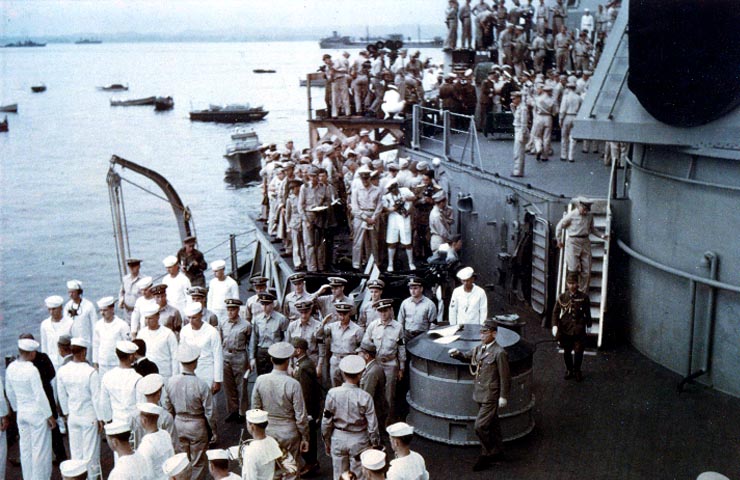
Japanese delegation leaving the USS Missouri, September 2, 1945
Russia did enter the war against Japan mere days before the bombs were dropped and captured Japanese land. But instead of reparations, the United States allowed Japan to retain their emperor, though not as a god. Douglas MacArthur served as the Supreme Commander of Japan for the next six years, promoting the rebuilding of the devastated nation and inviting the churches of America to send missionaries with the Gospel to a people whose emperor-god proved mortal after all. It was the first time in history that Christians would have unfettered opportunity to preach in Japan without sanction or government restriction. Some Christians believe the tepid response to that call was due to the hatred of the Japanese that had been promulgated throughout the war by government propaganda as well as by the brutal way American POWs were treated. Whatever the reasons for neglect, most Japanese today worship money and entertainment, the same gods of many Americans.
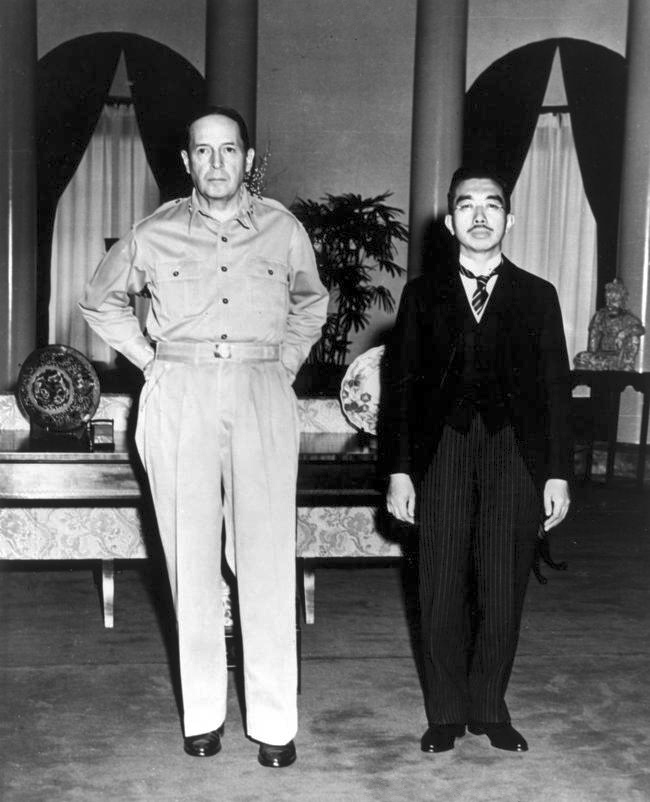
General MacArthur and Emperor Hirohito at the U.S. Embassy in Tokyo, September 27, 1945
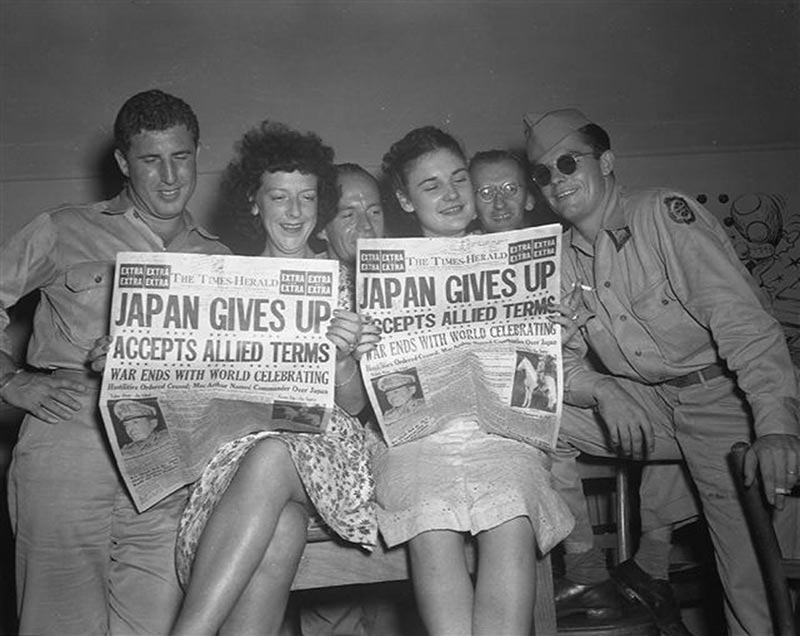
VJ-Day group with newspapers
Image Credits: 1 Japanese Surrender on USS Missouri (Library of Congress) 2 77th Division (Wikipedia.org) 3 Nagasaki bomb (Wikipedia.org) 4 Japanese delegation (Wikipedia.org) 5 Japanese delegation departs (Wikipedia.org) 6 MacArthur and Emperor Hirohito (Wikipedia.org) 7 Newspaper headlines (Library of Congress)



